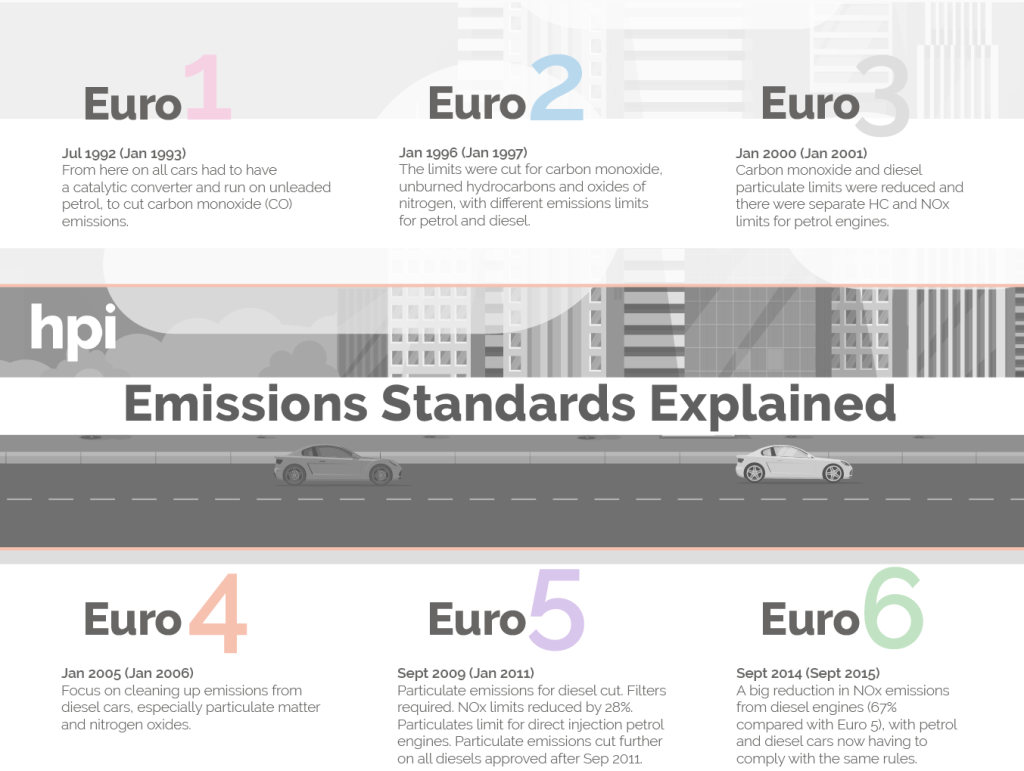European Emission Standards Timeline

How Euro Emission Standards Influence Modern Car Design
As global concerns over air pollution and climate change continue to grow, European Emission Standards have played a critical role in shaping modern vehicle design. Since the introduction of Euro 1 in 1992, each subsequent standard has imposed stricter limits on pollutants such as carbon monoxide (CO), hydrocarbons (HC), nitrogen oxides (NOx), and particulate matter (PM). These regulations have driven significant advancements in engine technology, exhaust treatment systems, and overall vehicle efficiency.
Key Areas of Impact on Car Design
1. Advanced Exhaust Treatment Systems. Modern cars must incorporate sophisticated exhaust treatment systems to comply with stringent Euro standards, particularly Euro 6 and the upcoming Euro 7.
This includes:
Diesel Particulate Filters (DPF):
These are mandatory for diesel vehicles to capture harmful soot and particulate matter.
Selective Catalytic Reduction (SCR):
A system that uses AdBlue (urea solution) to break down NOx emissions into harmless nitrogen and water.
Gasoline Particulate Filters (GPF):
Now common in petrol engines, these filters help reduce particulate emissions from direct injection engines.
2. Engine Efficiency and Emission ControlTo meet stringent NOx and CO2 targets, manufacturers have adopted several engine innovations,
such as:
Turbocharging and Downsizing:
Smaller, turbocharged engines produce higher efficiency with lower emissions.
Variable Valve Timing (VVT):
Adjusting valve timing helps optimise combustion and improve fuel efficiency.
Exhaust Gas Recirculation (EGR):
Reduces NOx emissions by recirculating a portion of exhaust gases back into the combustion chamber.
3. Electrification and HybridisationWith Euro 7 placing even stricter limits on combustion engine emissions, manufacturers are shifting towards hybrid and electric powertrains. This includes:
Mild Hybrid Systems (MHEV):
Using a small electric motor to assist the engine, reducing fuel consumption and emissions.
Plug-in Hybrid Vehicles (PHEV):
Combining electric and petrol/diesel power for lower overall emissions.
Full Battery Electric Vehicles (BEV):
Completely eliminating tailpipe emissions and meeting future zero-emission goals.
4. Aerodynamics and Lightweight Materials Improving vehicle aerodynamics and reducing weight has become crucial in lowering fuel consumption and CO2 emissions. Car manufacturers now use:
Aluminium and Carbon Fibre:
These lightweight materials help reduce overall vehicle weight.
Active Grilles and Aero Elements:
Adjusting airflow to optimise engine cooling and aerodynamic efficiency.
What This Means for Car Owners While modern cars are becoming cleaner and more efficient, these emission technologies also mean increased maintenance needs, such as DPF regeneration, AdBlue refills, and specialised engine diagnostics. Keeping these systems clean and functioning efficiently is essential for optimal performance and compliance with emission regulations.
At Carbontech, we specialise in intake manifold and carbon cleaning services, helping to maintain engine efficiency and reduce harmful emissions. Our Flexfuel Hy-Carbon, Carbon X3 technology ensures your vehicle stays compliant with emission standards while improving performance and fuel economy.
Stay ahead of emission regulations—book your cleaning service with Carbontech today!